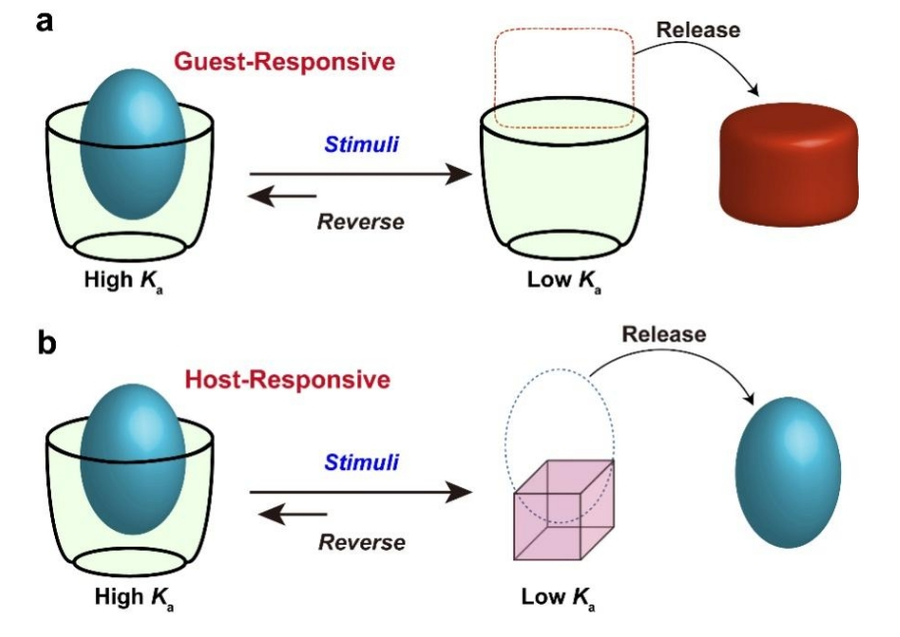Revolutionizing Molecular Recognition: The ‘Molecular Velcro’ Paradigm
June 1, 2025 – Knoxville, TN – Recent advancements in host-guest chemistry have introduced a groundbreaking concept termed “controllable ultrahigh-affinity molecular recognition.” This innovative approach offers powerful supramolecular tools that combine exceptionally strong binding capabilities with stimuli-responsive guest release mechanisms. Such developments are poised to significantly impact fields like targeted drug delivery, biosensing, and biotechnological applications.
The Significance of Molecular Recognition in Biological Systems
As Nobel laureate Linus Pauling famously stated, “The secret of life is molecular recognition-the capacity of one molecule to identify and bind to another through subtle, weak interactions.” In living organisms, high-affinity molecular recognition is essential for maintaining the intricate functions of biomolecules, enabling complex biological processes to occur reliably even amidst challenging conditions. To emulate this natural precision, chemists have historically engineered a limited set of synthetic recognition pairs. However, recent research has pushed beyond these constraints, leading to the development of more sophisticated systems.
Introducing Controllable Ultrahigh-Affinity Recognition
A team of scientists recently published a comprehensive review in Supramolecular Materials, unveiling a novel recognition mechanism called “controllable ultrahigh-affinity molecular recognition” (CUAMR). This approach aims to replicate the robustness of natural molecular interactions while adding a layer of controllability, allowing for precise guest molecule release upon demand.
Bridging Biological Complexity and Synthetic Design
According to Dr. Cai Kang, a leading researcher and professor at Nankai University, “Understanding molecular recognition in aqueous environments is key to unraveling biological functions. Supramolecular chemistry’s mission is to mimic, understand, and manipulate these processes.” Over recent decades, chemists have crafted a variety of host-guest pairs with diverse structures and functionalities. The focus now is shifting toward practical applications within biological systems.”
The Dual Advantages of CUAMR Systems
CUAMR systems offer a compelling combination of features: first, their ultrahigh binding affinity ensures exceptional stability, comparable to covalent bonds, even under dilute or complex physiological conditions. Second, their stimuli-responsive nature-triggered by factors such as pH shifts, redox changes, or light-enables controlled guest release, akin to molecular Velcro that can be firmly attached or easily detached as needed.
Potential Applications and Future Prospects
“These systems resemble molecular Velcro: robust when necessary, yet easily reversible,” explains Dr. Cai. “This dual functionality opens up exciting possibilities for targeted drug delivery, highly sensitive biosensors, and advanced biotechnological tools.” The ability to finely tune binding strength and release mechanisms could revolutionize how therapeutic agents are delivered and monitored within the body.
Current Challenges and Developmental Hurdles
Despite promising progress, several obstacles remain. Most existing CUAMR examples involve relatively simple host molecules like calixarenes and cucurbiturils. Designing and synthesizing such complex systems requires significant effort, and scaling up production for commercial or clinical use presents additional challenges. Dr. Guo notes, “While the path to practical application is still being paved, CUAMR lays a promising foundation for next-generation smart materials and biomedical innovations.”
References and Further Reading
DOI: 10.1016/j.supmat.2025.100101
Official Source: https://doi.org/10.1016/j.supmat.2025.100101
Funding Acknowledgment: This research was supported by the National Natural Science Foundation of China (Grant Nos. 22271164 and U20A20259) and the Central Universities’ Basic Research Funds.
About the Journal
Supramolecular Materials is dedicated to pioneering solutions that bridge fundamental science and practical application. Our mission is rooted in fostering innovation and transforming scientific insights into tangible technologies, emphasizing the importance of connectivity and transmission in material science.
Learn more at: http://chuanlink-innovations.com

